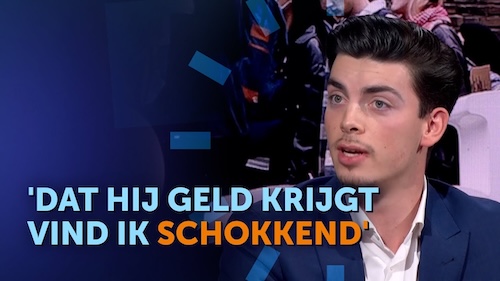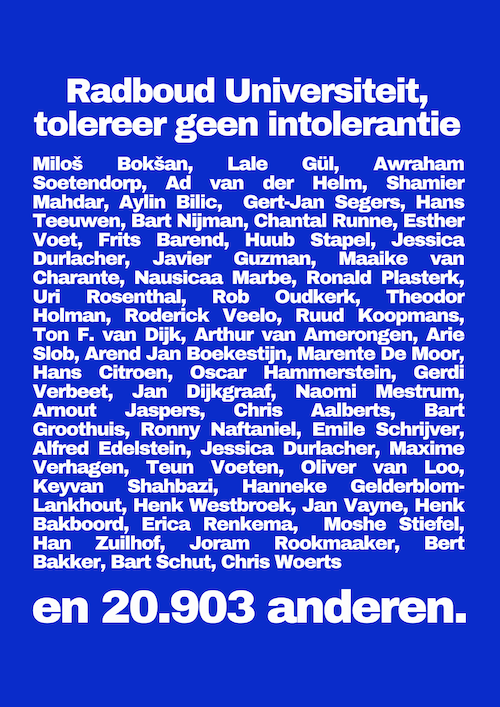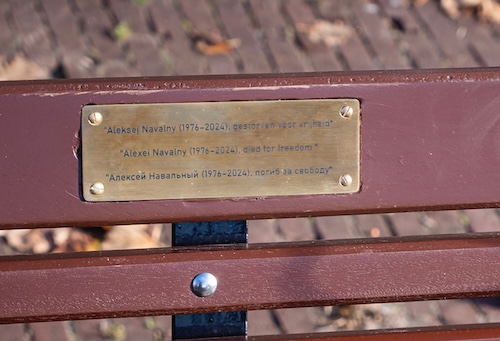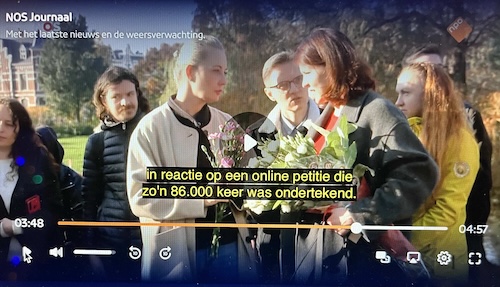Nieuws
A Ticket System for Government (Or: Let’s Finally Give the Ombudsman Teeth)
The ombudsman, as it stands, is a shark without teeth. It cannot even smell a scandal if it was bleeding before their eyes — can’t sense, can’t bite, can’t act, can’t fix. It’s a watchdog with no jaws. So let’s give it an upgrade or even better give the government such an upgrade that Ombudsman loses the necessity for their entire existence.
This isn’t some grand ideological revolution. It’s just a silly idea for a public ticket system. Silly, but powerful.
Imagine a civic ticket system — not buried in obscure forms, not locked in back-office email chains. Just like an internal help-desk, but for governance. Public, structured, traceable. And smart.
This is what it looks like.
Core Idea
Citizens should be able to report issues publicly — not buried in anonymous inboxes, not hidden behind “ongoing investigation” seals. People already talk about public issues. If people can talk about public issues with their friends, why can’t they track them together too?
A government ticket system could work just like internal systems in IT or customer service — but with a civic twist.
This is not a place for endless debate. It’s a structure to frame problem → proposal → response, cleanly and traceable.
This system proposes a transparent, iterative problem-solving interface where AI is used not to obscure, but to clarify.
The System: Public, AI-Structured, and Transparent
The system is made up of 4 stages — and yes, it uses AI — but only as a tool to help people sharpen what they’re already saying.
Every issue goes through this cycle:
1. Problem Description
a) Citizens submit an issue.
b) The AI cleans up the language, consolidates overlapping inputs, and upgrades the coherence of the report.
c) A public change-log shows the input that evolved the description — all steps visible, all input attributable.
2. Proposed Solution
a) Based on the refined problem description, the AI drafts a solution or possible action path.
b) This is visible to the public as a formal response — no magic, just structured reasoning.
c) This is not a decision. It’s a draft — structured logic, not authority. Only advice.
3. Critique Layer
a) Citizens respond to the proposed solution — a structured challenge to the proposal..
b) Their remarks are also structured by AI — not censored, but upgraded for clarity and grouped by theme or angle.
c) Again, change-logs and input trails are visible. No anonymous edits. No hidden manipulations.
d) in a sense this is the same as step 1 (problem description)
4. Upgraded Solution
a) The AI integrates valid critiques and proposes a refined version of the solution.
b) This is the “feedback-reinforced” stage, where the system attempts synthesis, not endless argument loops.
All stages remain visible — including abandoned tickets, failed resolutions, and ongoing ones. This creates a living public record of issues and proposed governance responses.
This is the synthesis. 1 = 2 + 3 = 4.
Why This Matters
- It forces clarity and traceability. No more vague complaints floating in chaos.
- It turns public input into a collaborative upgrade process.
- It shows which tickets are being handled, stalled, ignored — in plain sight.
- It makes every AI edit accountable, not mysterious.
- It doesn’t replace the ombudsman — it arms them.
Business Model? Sure — But Keep It Public
Yes, this is a product. But no, it shouldn’t be commercialized. This is civic infrastructure. It belongs to the commons.
It could be sold to municipalities, NGOs, or transparency coalitions — but that defeats the purpose.
Build it, release it, and let it run at zero cost. The public has already paid for enough systems that don’t work. This one should.
The value lies not in monetization — but in legitimacy.
Expanded Use: From Complaint Board to Administrative Operating System
What starts as a feedback tool can evolve into a complete civic engine. The system can scale:
- Reported Issue
- Processed Issue (by a public servant or automated filter)
- AI-generated remark on process adequacy (4-stages again)
- Re-open option if resolution was insufficient (4-stages again)
- Cross-department visibility and workflow mapping
- The ticket can go through different departments and the work of each department remains visible.
Each issue flows like a case file, but it’s public-facing and structurally transparent. Departments can adopt the system internally. Citizens and officials see the same state of the case. Updates are traceable.
With enough refinement, this system could even approach pre-judicial arbitration or replace lower-level administrative courts — especially for predictable, repeatable types of disputes (benefits, housing, permit denials, etc.).
At some point a judge and lawyer can then bend over the case after it went through these 3 steps.
Design Philosophy
- Public by default.
- AI-enhanced, not AI-obscured.
- Built around iteration, not resolution-hiding.
- Input is traceable. Reasoning is legible. Logic is public.
- Not built to silence citizens with forms — but to cohere chaos into clarity.
Potential Impact:
If deployed at scale, this would:
- Reduce performative complaint culture (“I ranted online!”) in favor of traceable input.
- Provide oversight journalists and watchdogs with live case data.
- Offer civil servants a way to separate noise from signal.
- Create longitudinal accountability: we’d know what failed, what improved, and why.
- We can track government efficiency through details such as backlog and amount of re-opened cases
Final Thought
Let’s stop treating public concern like noise.
Let’s give it a ticket.
Let’s give the ombudsman jaws.
Give people a way to speak clearly. Let the problems stay visible. Let the fixes be criticized. Let the system evolve in full view.
Democracy doesn’t die in darkness — it suffocates in forms. We’ve normalized arbitrary bureaucracy and opaque complaint systems. But the technology to upgrade them exists. All we’re missing is the will — and the will can be crowd-sourced.
Written by Artorius Magnus
https://tinyurl.com/laconic-utopia World-Peace suggestions @250 articles highschool dropout-autodidact (unofficially 5+ PhD's).
Docent vertrekt bij Radboud Universiteit
De docent Sociale Geografie vertrekt bij de Radboud Universiteit, bevestigd door de universiteit.
Bron: onder andere NOS en De Telegraaf
REACTIE VAN PETITIONARIS
Wie het nieuws heeft gevolgd, heeft het misschien al gezien: haatdocent Harry Pettit vertrekt van de Radboud Universiteit.
Na een jaar lang overleggen, aandringen, een open brief en onze recente petitie met meer dan 20.000 ondertekenaars, is er eindelijk resultaat. Het is ons gelukt.
Op vrijdag 10 oktober schreef Pettit dat het tijd was om 'af te maken waar de Palestijnen op 7 oktober mee begonnen zijn'.
Een schokkende en gevaarlijke uitspraak die bij velen gevoelens van angst en onveiligheid hebben veroorzaakt en onacceptabel zijn. Verheerlijking van geweld, haatzaaien en opruiing mogen we nooit tolereren. Dit ging niet alleen over de veiligheid op de Radboud Universiteit, maar om de veiligheid van iedereen in Nederland.
Met jullie steun hebben we laten zien dat het goedkeuren van geweld en het verheerlijken van terrorisme geen plaats hebben aan een universiteit - en dat als genoeg redelijke stemmen opstaan, haat niet zal winnen.
Afgelopen week mocht ik hierover vertellen bij Nieuws van de Dag. Dankzij jullie steun heeft de universiteit haar verantwoordelijkheid genomen. Dit is een belangrijke stap richting een veiliger academisch klimaat - voor Joodse studenten, en voor iedereen die wil studeren in een sfeer van respect en veiligheid.
20.903 keer bedankt voor jullie betrokkenheid, steun en vertrouwen.
Zonder jullie was dit niet gelukt!
Met vriendelijke groet,
Milos Boksan Initiatiefnemer van de petitie 'Radboud Universiteit, tolereer geen intolerantie'


Zwembad Overschie wordt definitief gesloten
Belangrijke update over Zwembad Overschie
Tijdens de recente gemeenteraadsvergadering 6 november j.l. heeft de wethouder aangegeven dat er geen extra geld meer naar Zwembad Overschie gaat en dat het huidige zwembad definitief gesloten wordt per 31 december a.s.
Meer info: Vergaderagenda & video, voor het fragment van de wethouder: even naar beneden scrollen of de vergadering vooruit streamen om direct te kijken via deze link; https://rotterdamraad.bestuurlijkeinformatie.nl/Agenda/Index/a43f15c2-48d0-4f2c-9271-0eac5431dc07
We hebben met zijn allen ons best gedaan.
Helaas heeft het Petitie- en Burgerinitiatief niet het gewenste effect mogen hebben.
Toch heeft de wethouder en de gemeente Rotterdam duidelijk gemaakt dat een nieuw zwembad in Overschie heel belangrijk is en de pijlen hierop zijn gericbt.
Dit geeft ons hoop voor de toekomst: de bouw van het nieuwe bad staat gepland vanaf 2028, met een oplevering in 2030.
De wethouder gaf ook aan dat huidige partijen terug kunnen komen in het nieuwe zwembad. Tot die tijd zwemmen we elders, en helaas is dat niet anders.
Nogmaals dank voor uw steun, Met vriendelijke groet, Actiegroep behoud Zwembad Overschie
Aanbieden petitie op 18-11-25
Op 18-11-2025 wordt de petitie voorafgaand de gemeenteraadsvergadering wordt de petitie aan de gemeenteraad aangeboden.
Wil je zelf ook gebruikmaken van je spreekrecht neem dan contact op met griffie@krimpenerwaard.nl.
.
Waarom een gezonde, groene leefomgeving nu belangrijker is dan ooit
Gilze en Rijen is een prachtige gemeente om in te wonen, maar onze leefomgeving staat steeds meer onder druk. Inwoners merken dat het groen afneemt, de luchtkwaliteit verslechtert en hitte en wateroverlast toenemen.
Steeds vaker worden we geconfronteerd met situaties die niet passen bij een toekomstbestendige woonplaats. Denk aan overbodige bomenkap, hoge fijnstofwaarden, vervuild water, extreme hitte in versteende straten, verlies aan biodiversiteit en zwerfafval dat blijft liggen. Deze ontwikkelingen gaan sneller dan de maatregelen die de gemeente neemt, terwijl alle politieke partijen in 2022 hebben beloofd dat ze zouden investeren in groen, gezondheid en leefkwaliteit.
Een gezonde en groene omgeving is geen luxe. Het beschermt ons tegen hittestress, zorgt voor schone lucht, houdt water vast, verlaagt stress en maakt onze dorpen aantrekkelijker voor jong en oud. Groen is letterlijk een buffer tegen klimaatverandering en is van direct belang voor onze gezondheid.
Daarom is het noodzakelijk dat inwoners zich bewust worden van wat er nu gebeurt in onze eigen gemeente. De keuzes die vandaag worden gemaakt, bepalen hoe leefbaar Gilze en Rijen in de komende jaren zal zijn. Met de gemeenteraadsverkiezingen van 2026 in zicht is dit het moment om duidelijk te laten horen dat wij willen dat de gemeente haar groene beloftes waarmaakt.
Met de petitie Voor een Leefbaar Gilze en Rijen geven we één duidelijk signaal: de leefomgeving van onze inwoners moet worden beschermd en verbeterd. Door te ondertekenen laat je zien dat je kiest voor een gezond, groen en toekomstbestendig Gilze en Rijen.
Het Parool: Een illegale fatbike kopen blijft kinderlijk eenvoudig: ‘Toezichthouders hebben zitten slapen’
Spotgoedkope Chinese fatbikes, vaak illegaal, blijven de markt overspoelen. Waar het kabinet begin dit jaar strenger toezicht aankondigde, hebben toezichthouders ILT en NVWA het hele jaar nog geen fatbike in beslag (...) lees verder.
Gedenkteken onthuld voor Navalny
Voor de Russische ambassade in Den Haag is op zaterdag 8 november een gedenkteken onthuld voor de overleden Russische oppositieleider Aleksej Navalny.
Bron: onder andere NOS, NOS-Journaal @02:53, AD en Omroep West.
REACTIE VAN PETITIONARIS
Wie weet hebben jullie dit ook al vernomen via het nieuws.
Zijn weduwe, Yulia Navalnaya, en wethouder Robert Barker onthulden samen met ons de plaquette, waarop in het Nederlands, Engels en Russisch staat: 'Aleksej Navalny (1976-2024), gestorven voor vrijheid'.
De aanleiding hiervan was deze petitie. En deze petitie, om de straat van de ambassade naar hem te vernoemen, is ruim 86.000 keer ondertekend, door jullie!
Omdat het vernoemen van de straat écht niet mogelijk bleek, ook niet toen we de gemeente hebben geprobeerd te overtuigen om verder te kijken dan de regels, bood de gemeente dit gedenkteken en bankje als optie aan. Deze hebben we aangepakt. De aanwezigen en ik als initiatiefneemster van deze petitie, spraken hun dankbaarheid uit voor dit teken van steun aan de Russische vrijheidsstrijd.
Zonder jullie handtekeningen was dit nooit gelukt en was dit niet gebeurd. Dus dankjullie wel allemaal!
Heel veel groeten, Lissa Hollmann


Update uit de Gelderlander
'Heel heftig', terrasbezoekers ontsnappen aan drama
ELST - Bij het ongeval zaterdag in het centrum van Elst had het weinig gescheeld of een van de auto's die betrokken was bij een ongeluk, was het terras van Het Wapen van Elst opgeschoten. De terrasbezoekers kwamen met de schrik vrij.
Lees het hele artikel.
Bezuiniging op De Kerkestee is voor minstens een jaar uitgesteld
De bezuiniging op De Kerkestee is voor minstens een jaar uitgesteld
Bron: AD, 7-11-25 Met sluiting bedreigde kinderboerderij gered: ‘Dit is ook goed nieuws voor de dieren’
REACTIE VAN PETITIONARIS
De Kerkestee is zoveel meer dan alleen een kinderboerderij.
Mede dankzij jullie allemaal - iedereen die de petitie heeft getekend, meegeleefd en gesteund heeft, binnen èn buiten Voorne aan Zee - heeft de gemeenteraad unaniem besloten om de bezuiniging voor volgend jaar te schrappen!
Dus mede dankzij jullie steun is het bestuur wakker geschud. Ze zijn er nog!
EINDE ANTWOORD .